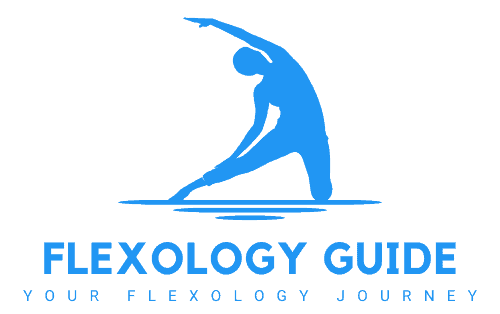Assisted stretching is rapidly gaining popularity as people recognize its numerous benefits, including improved flexibility, pain relief, and enhanced mobility. Whether you’re an athlete, an office worker, or someone recovering from an injury, professional stretch services are becoming a go-to wellness solution.
In this article, we’ll explore the growing demand for assisted stretching, the health and wellness trends driving its popularity, and how technology and fitness industries are incorporating it into mainstream practices.
The Growing Demand for Assisted Stretching
The demand for assisted stretching has surged due to lifestyle changes, increased health awareness, and a shift toward holistic wellness. People are realizing that stretching goes beyond flexibility—it also plays a crucial role in injury prevention, pain relief, and recovery.
1. Increased Awareness of Flexibility & Mobility Benefits
- More people recognize that flexibility improves physical performance, prevents injuries, and reduces stiffness.
- Assisted stretching helps individuals restore natural movement and improve overall body function.
2. Shift Toward Preventative Healthcare & Injury Prevention
- Preventative care is gaining popularity, and assisted stretching is seen as a non-invasive way to prevent injuries and maintain mobility.
- Regular stretching can help reduce the risk of chronic pain and joint stiffness.
3. Non-Invasive Pain Relief & Recovery
- Assisted stretching is a drug-free alternative for managing muscle pain and tightness.
- It is beneficial for people suffering from chronic pain, mobility issues, or post-injury stiffness.
4. Rise of Assisted Stretching Studios & Wellness Franchises
- The increase in dedicated stretching studios has made professional stretching more accessible and mainstream.
- Franchises like StretchLab, Stretch Zone, and StretchU have expanded assisted stretching services nationwide.
Health & Wellness Trends Driving Popularity
1. Sedentary Lifestyles & Desk Jobs
Modern work environments contribute to poor posture, stiff muscles, and lower back pain. Assisted stretching helps:
- Counteract the effects of prolonged sitting by relieving tension in the lower back, hips, and shoulders.
- Improve posture and restore natural mobility.
2. Athletic Performance & Recovery
Athletes and fitness enthusiasts use assisted stretching to boost performance and speed up recovery. Benefits include:
- Faster muscle recovery due to improved blood circulation.
- Reduced risk of muscle strains by enhancing joint mobility.
- PNF (Proprioceptive Neuromuscular Facilitation) techniques that improve range of motion and muscle activation.
3. Aging Population & Mobility Concerns – Seniors
As people age, they often experience:
- Decreased flexibility and stiff joints, leading to mobility issues.
- Assisted stretching helps seniors maintain balance, independence, and prevent falls.
4. Holistic Wellness & Stress Reduction
The mind-body connection is becoming a key focus in wellness. Assisted stretching:
- Reduces stress by activating the parasympathetic nervous system.
- Enhances relaxation through deep stretching and breathwork techniques.
- Complements yoga, massage therapy, and other wellness practices.
The Rise of Assisted Stretching Studios & Services
1. Expansion of Stretching Franchises
- Franchises like StretchLab, Stretch Zone, and StretchU have introduced science-backed, professional stretch programs to the mainstream.
2. Integration with Fitness & Healthcare Services
Assisted stretching is now available in:
- Fitness centers as a post-workout muscle recovery method.
- Chiropractic clinics to enhance spinal health and reduce tension.
- Physical therapy offices for rehabilitation and mobility improvement.
3. Corporate Wellness Programs
Businesses are incorporating assisted stretching into employee wellness programs to:
- Reduce work-related muscle stiffness and discomfort.
- Boost productivity and overall well-being.
Technology & Innovation in Assisted Stretching
1. AI & Data-Driven Flexibility Assessments
- AI-based tools can analyze range of motion, track progress, and recommend personalized stretching plans.
2. Wearable Mobility Devices & Apps
- Smart devices provide real-time feedback on movement patterns and guide users through customized stretching routines.
3. Robotics & Assisted Stretching Equipment
- Stretch therapy devices and passive stretching machines are making assisted stretching more efficient and accessible.
Future of Assisted Stretching
The future of assisted stretching looks promising, with growth in:
- Mainstream fitness and wellness industries.
- Integration with sports medicine, chiropractic care, and physical therapy.
- Digital and home-based solutions, including virtual stretching guidance.
As research continues to validate its benefits, assisted stretching will become an even more integral part of modern wellness routines.
Conclusion
Assisted stretching has emerged as a game-changing solution for pain relief, flexibility, and recovery. With dedicated stretching studios, corporate wellness programs, and innovative technology, assisted stretching is here to stay.
Whether you’re an athlete, office worker, senior, or someone recovering from an injury, professional stretching services can significantly enhance your mobility and overall well-being.
Frequently Asked Questions (FAQs)
1. Why is assisted stretching so popular right now?
Assisted stretching is gaining popularity as more people recognize its benefits for flexibility, pain relief, and mobility.
2. How does assisted stretching differ from regular stretching?
Unlike self-stretching, assisted stretching is guided by a professional, allowing for a deeper and safer stretch.
3. Is assisted stretching only for athletes?
No, it’s beneficial for everyone, including desk workers, seniors, and those recovering from injuries.
4. How long does an assisted stretching session last?
Most sessions last 25 to 50 minutes, depending on the provider and session type.
5. Is assisted stretching safe for people with injuries?
Individuals with injuries should consult a physical therapist or medical professional before starting assisted stretching.
6. How often should I do assisted stretching?
For best results, one to two times per week is recommended, but it varies based on personal goals and mobility needs.
7. Where can I try assisted stretching?
Popular options include:
- Stretching studios such as StretchLab and Stretch Zone.
- Physical therapy clinics.
- Chiropractic offices.
- Wellness centers and gyms.
